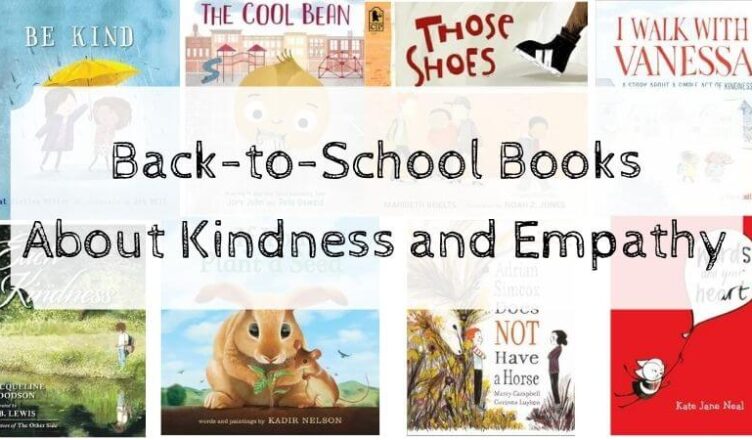Teaching children about kindness and empathy leads to respecting other classmates and building stronger friendships. These important concepts not only help make the classroom a healthier place to learn, but also provide students with life lessons that will help shape their character for many years to come.
*This post contains affiliate links. To read my full disclosure CLICK HERE.
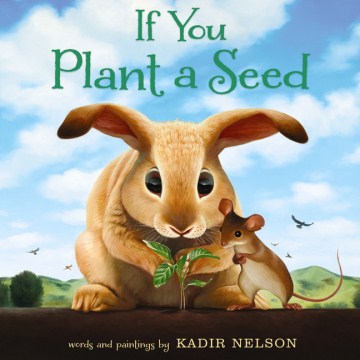 If You Plant a Seed by Kadir Nelson, 2015
If You Plant a Seed by Kadir Nelson, 2015
(Ages 3 and up)
Kadir Nelson cleverly uses the idea of planting seeds as a metaphor for kindness. His stunning illustrations capture a bunny and mouse who lovingly grow vegetables. When they refuse to share with a group of birds, a fight breaks out and the food is destroyed. Apologies are made and the last surviving tomato is shared. The birds fly away and return with a multitude of seeds that grow into a large garden to be shared with several new friends.
The illustrations in this book are absolutely gorgeous and the minimal text may seem simple on the surface, but the message of sharing is quite powerful and poignant. The short text also serves as an excellent discussion prompt for what and why the characters are acting the way they are helping children further internalize the important message in the story.
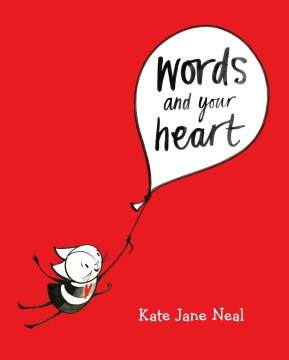 Words and Your Heart by Kate Jane Neal, 2015
Words and Your Heart by Kate Jane Neal, 2015
(Ages 3 and up)
I could not love this book more. It does an incredible job of conveying the concept that words hold great power. Simple, engaging illustrations combined with playful text presented in various sizes and fonts create a child-friendly avenue for this important message. It touches upon the fact that words can be hurtful, but encourages the reader to use words to look after each other’s hearts. This book is beautifully crafted and impactful.
 A Small Kindness by Stacy McAnulty; illustrated by Wendy Leach, 2021
A Small Kindness by Stacy McAnulty; illustrated by Wendy Leach, 2021
A Small Kindness follows a diverse group of children on their first day of school. The opening pages present the school in sepia tones with one girl standing out in full color. When she smiles at another boy, he brightens too. With each act of kindness passed on among the students and teachers, the pages fill with vivid hues demonstrating the remarkable power a compassionate gesture has on others.
The visualization of the immediate and prolonged effect of good deeds is especially impactful. The concise text provides several ideas for friendly acts that can easily be implemented every day and passed on like a game of tag. It also reinforces the idea that a classroom is a community enriched when we are kind to one another.
 Tomorrow I’ll Be Kind by Jessica Hische, 2020
Tomorrow I’ll Be Kind by Jessica Hische, 2020
(Ages 3 and up)
This beautifully illustrated picture book inspires children to strive to be helpful, patient, gentle, honest, generous, grateful, and kind each and every day. These positive characteristics are presented in a lovely, artful way celebrating each one. The subsequent page then provides examples of how children can incorporate these affirming attributes in practical ways.
I highly recommend this and the companion book, Tomorrow I’ll be Brave (2018).
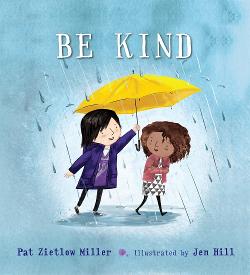 Be Kind by Pat Zietlow Miller; illustrated by Jen Hill, 2018
Be Kind by Pat Zietlow Miller; illustrated by Jen Hill, 2018
(Ages 4 and up)
This exceptional book expertly demonstrates what kindness looks like and the impact it can have on people in a child-friendly way.
When Tanisha spills grape juice all over her new dress, most of the other kids laugh. However, one unnamed girl wants to be kind, but she is not exactly sure how. Poignant text matched with soft illustrations demonstrate the girl’s thought process as she thinks of examples of kindness she has experienced.
There are many books that cover this subject, but Be Kind stands apart. It does a remarkable job of providing an overview of kindness along with clear examples that make this abstract concept more concrete for children. It touches upon both the individual and global impact of kindness and while it may not always be easy to be kind, each small act is meaningful. This is a book that belongs in every home and classroom library to inspire kindness and empathy.
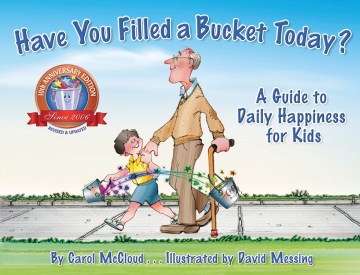 Have You Filled a Bucket Today? A guide to daily happiness for kids by Carol McCloud; illustrated by David Messing, 2006
Have You Filled a Bucket Today? A guide to daily happiness for kids by Carol McCloud; illustrated by David Messing, 2006
(Ages 4 and up)
This book plays on the idea that everyone has their own invisible bucket that represents their mental and emotional health. When we are kind to others, it not only fills their buckets, but also our own, making everyone happier. Conversely, if we are mean to others, we dip into their buckets and take away their joy.
With its clear message and engaging illustrations, this book does an excellent job of demonstrating how easy and rewarding it is to be nice to others. When I was a school librarian, this book was used in every classroom in the school and I use it now with my own children. It is effective and inspirational.
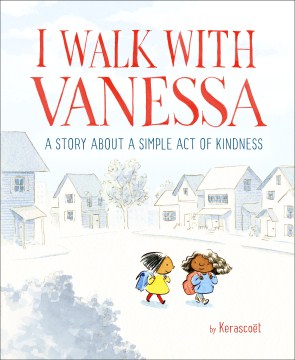 I Walk With Vanessa: a story about a simple act of kindness by Kerascoet, 2018
I Walk With Vanessa: a story about a simple act of kindness by Kerascoet, 2018
(Ages 5 and up)
With themes of kindness, courage, and anti-bullying, I Walk With Vanessa is a must-have for classroom libraries.
When a young girl observes a hurtful act toward a new classmate, she decides to take action and extend kindness to the victim by walking with her to school. Soon several classmates join together and form a united front.
The book is made even more powerful by its lack of text. It allows readers to interpret the characters’ expressions and develop their own conclusions. This story is an excellent tool for teaching anti-bullying standards. It touches upon a child demonstrating bullying behavior, a victim, and a bystander. The story can be used to prompt an important discussion about each character’s role and the actions they take. Students can take turns role playing the characters and because there is no text, children can create their own dialogue further internalizing the situation.
My children were captivated by this story and asked for repeated readings, creating several important discussions.
 The Cool Bean by Jory John and Pete Oswald, 2019
The Cool Bean by Jory John and Pete Oswald, 2019
(Ages 5 and up)
When a bow-tie wearing bean laments over the distance that has grown between him and his old friends who wear sunglasses and swagger through the halls of the school, he is shocked to discover that coolness is more than how you dress and move. The cool beans are kind and help those in need.
My son came home the other day asking what the word “nerd” meant because someone at his school told him that “nerds” grow weird things out of their belly buttons. I honestly don’t know where kids get these ideas, but what I do know is that kids can feel a lot of pressure in school to act “cool” and I am so incredibly thankful that there is an entertaining and engaging picture book out there teaching them that it is cool to be kind!
I also highly recommend this dynamic duo’s other two books with positive messages, TheBad Seed and The Good Egg.
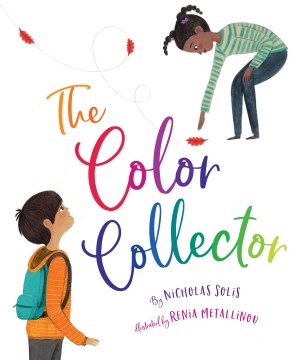 The Color Collector by Nicholas Solis; illustrated by Renia Metallinou, 2021
The Color Collector by Nicholas Solis; illustrated by Renia Metallinou, 2021
When a boy notices a new girl at school named Violet, he respects her shyness while also trying to make her feel welcome. When he observes her picking up colorful keepsakes on her way home, he grows curious what she uses them for. He asks her about it one day and is surprised when Violet shows the collection of items on her wall that create a stunning mosaic of her island home. As the boy listens to her describe everything she misses about her old life, Violet feels comforted in sharing her sadness with a friend. As the boy walks home, he spots a colorful leaf and begins his own collection.
This tender tale skillfully depicts the impact of the boy’s kindness in the black and white illustrations that light up with color as the friendship blooms. The acts of saying hello and listening may seem simple, but this story demonstrates the powerful effect empathy can have in changing someone’s life and helping them feel seen.
 Those Shoes by Maribeth Boelts; illustrated by Noah Z. Jones, 2007
Those Shoes by Maribeth Boelts; illustrated by Noah Z. Jones, 2007
(Ages 5 and up)
This powerful story will stay with readers long after closing the book. Jeremy desperately wants a pair of black high-tops with two white stripes, but his grandmother cannot afford them. He sadly watches as all of his friends come to school with the coveted shoes. Finally, he finds his own pair at a secondhand store. Even though they are too small, he squeezes his feet in them each day until he notices one of his friends has shoes being held together with tape. In a heartfelt act of generosity, Jeremy gives his friend the popular shoes.
This thought-provoking book does an excellent job of reinforcing messages of need and want with kindness and compassion in a realistic scenario. It is one of my absolute favorite read alouds on kindness for elementary age children.
 Adrian Simcox Does Not Have a Horse by Marcy Campbell; illustrated by Corinna Luyken, 2018
Adrian Simcox Does Not Have a Horse by Marcy Campbell; illustrated by Corinna Luyken, 2018
(Ages 5 and up)
When a young girl overhears Adrian Simcox sharing that he has a horse, she is skeptical and expresses her disbelief. Once she has a better understanding of Adrian’s life and the effect her words have on him, she sees him and his horse in a new perspective.
Beautifully told and gorgeously illustrated, this powerful picture book is perfect for discussing empathy and compassion.
 Each Kindnessby Jacqueline Woodson; illustrated by E.B. Lewis, 2012
Each Kindnessby Jacqueline Woodson; illustrated by E.B. Lewis, 2012
(Ages 6 and up)
This thought-provoking picture book uses a poignant story and lovely watercolor illustrations to present a unique view of kindness.


